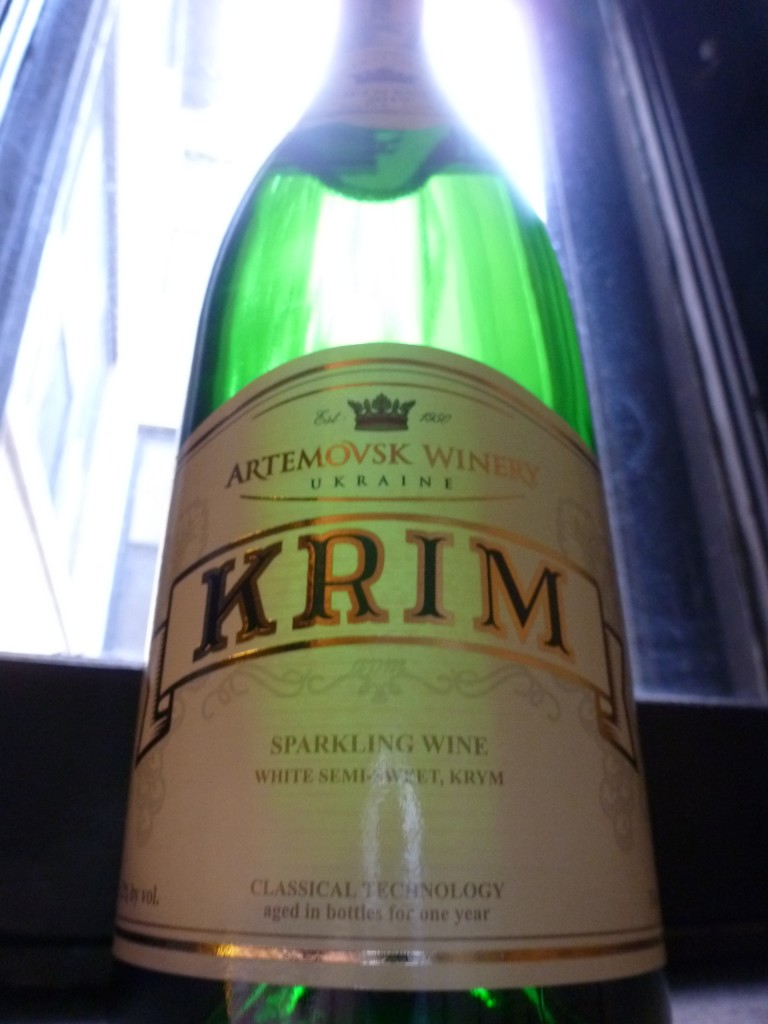Soviet Champagne
 Shopping in the disorganized but intriguing wine section of Gene’s a few days ago, I came across an exciting find: a bottle of 2010 Artemovsk Winery “Krim” semi-sweet sparkling wine. From the Ukraine! The label had the reassuring words “Classical Technology,” which I interpreted as Méthode Champenoise, since it went on to say “aged in bottles for one year.” It would seem I had a well-made Ukrainian sparkling wine on my hands! The $14 price tag indicated some ambition, so I snapped it up.
Shopping in the disorganized but intriguing wine section of Gene’s a few days ago, I came across an exciting find: a bottle of 2010 Artemovsk Winery “Krim” semi-sweet sparkling wine. From the Ukraine! The label had the reassuring words “Classical Technology,” which I interpreted as Méthode Champenoise, since it went on to say “aged in bottles for one year.” It would seem I had a well-made Ukrainian sparkling wine on my hands! The $14 price tag indicated some ambition, so I snapped it up.
If you, like me, assumed that Ukraine didn’t have much of a wine industry, you would be quite incorrect. According to The Oxford Companion to Wine, about 250,000 acres of vineyards currently grow in this former Soviet republic, mostly on the southerly Crimean Peninsula. Viticulture dates back thousands of years here. Serious sparkling wine production is a more recent phenomenon, starting in 1896 when Henri Roederer (of Roederer Champagne) founded a winery devoted to bubbly near Odessa.
The Russian Imperial Court loved sparkling wine, and the Soviets carried on that tradition (among others less palatable). One of the most important wineries producing Soviet “Champagne” was Artemovsk (also spelled “Artyomovsk”), located in the eastern Ukrainian town of Artemivsk.
No vineyards grace the countryside surrounding this industrial city, so why build a major winery here? Gypsum mines. These huge, abandoned mines provide ideal conditions for aging wine: cool and stable. With aging facilities like this, who cares if you have to truck the grapes up from the Crimean Peninsula?





